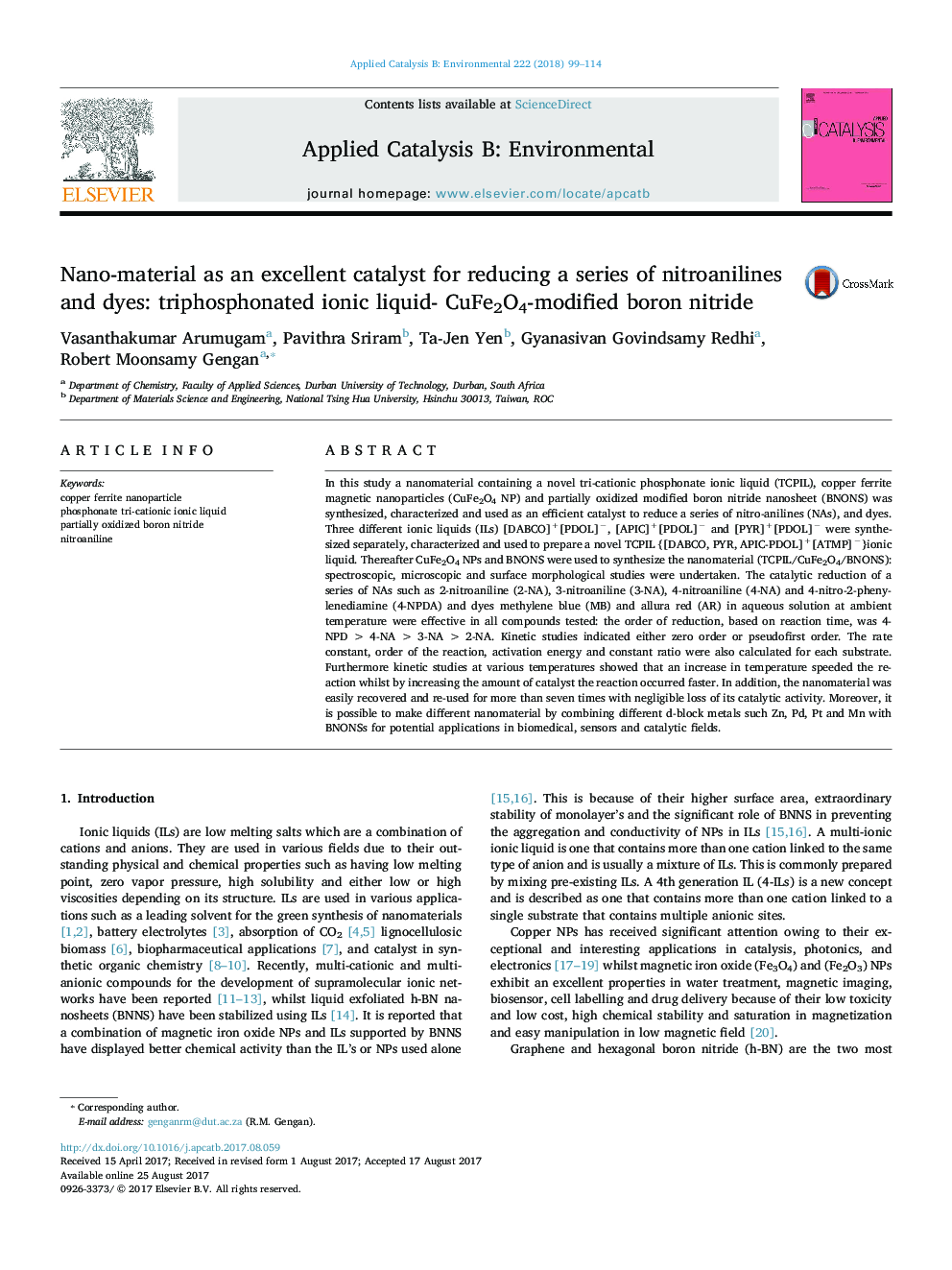| Article ID | Journal | Published Year | Pages | File Type |
|---|---|---|---|---|
| 6453356 | Applied Catalysis B: Environmental | 2018 | 16 Pages |
â¢Three novel ionic liquids were synthesized and characterized.â¢A novel nanomaterial containing CuFe2O4 NPs, h-BNONs and ILs was synthesized.â¢Kinetic studies were investigated for reduction reaction for series of NA and dyes.â¢Various temperature and amount of catalyst based kinetic studies were developed.â¢Rate constant, order of the reaction and activation energy were computed.
In this study a nanomaterial containing a novel tri-cationic phosphonate ionic liquid (TCPIL), copper ferrite magnetic nanoparticles (CuFe2O4 NP) and partially oxidized modified boron nitride nanosheet (BNONS) was synthesized, characterized and used as an efficient catalyst to reduce a series of nitro-anilines (NAs), and dyes. Three different ionic liquids (ILs) [DABCO]+[PDOL]â, [APIC]+[PDOL]â and [PYR]+[PDOL]â were synthesized separately, characterized and used to prepare a novel TCPIL {[DABCO, PYR, APIC-PDOL]+[ATMP]â}ionic liquid. Thereafter CuFe2O4 NPs and BNONS were used to synthesize the nanomaterial (TCPIL/CuFe2O4/BNONS): spectroscopic, microscopic and surface morphological studies were undertaken. The catalytic reduction of a series of NAs such as 2-nitroaniline (2-NA), 3-nitroaniline (3-NA), 4-nitroaniline (4-NA) and 4-nitro-2-phenylenediamine (4-NPDA) and dyes methylene blue (MB) and allura red (AR) in aqueous solution at ambient temperature were effective in all compounds tested: the order of reduction, based on reaction time, was 4-NPDÂ >Â 4-NAÂ >Â 3-NAÂ >Â 2-NA. Kinetic studies indicated either zero order or pseudofirst order. The rate constant, order of the reaction, activation energy and constant ratio were also calculated for each substrate. Furthermore kinetic studies at various temperatures showed that an increase in temperature speeded the reaction whilst by increasing the amount of catalyst the reaction occurred faster. In addition, the nanomaterial was easily recovered and re-used for more than seven times with negligible loss of its catalytic activity. Moreover, it is possible to make different nanomaterial by combining different d-block metals such Zn, Pd, Pt and Mn with BNONSs for potential applications in biomedical, sensors and catalytic fields.
Graphical abstractDownload high-res image (183KB)Download full-size image
